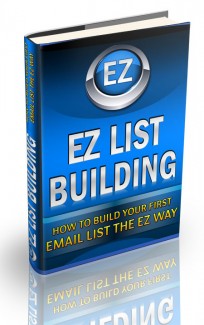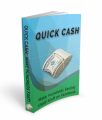 License Type: Private Label Rights
License Type: Private Label Rights  File Size: 9,079 KB
File Size: 9,079 KB File Type: ZIP
File Type: ZIP
 SKU: 51277
SKU: 51277  Shipping: Online Download
Shipping: Online Download
Ebook Sample Content Preview:
Once you have a list of subscribers who have already proven they are passionate about your niche, the next step is to set up a series of emails -called email swipes -- that you program your autoresponder to send out according to a pre-set schedule. There is no limit to the number of emails you can send out and your subscriber will keep receiving them from you until they unsubscribe.
The emails you send out should serve one of two purposes:
1. To reinforce the loyalty bond your subscriber has to you by giving them something of high value for free
2. To promote a particular product or service
An effective email swipe series will contain both types of emails. If you only send out emails that are promoting products and services, it’s unlikely that your subscribers are going to take a lot of value from your emails and they will be more likely to unsubscribe faster.
But if you alternate these promotional emails with others in which you provide free high-value content that they can actually use in their everyday lives, then your subscribers will be more likely to open your emails when you send them and will be more open to purchasing the products or services you promote when you send promotional emails.
Free high-value emails can contain original content that you have developed yourself or purchased in the form of freelancer content, PLR or some other source. Or they can simply contain links to informative content you have found that you know your subscribers will find useful.
It’s helpful if you think of your emails swipes as a newsletter that you are sending your subscribers. When you get a newsletter, you expect it to contain interesting and helpful articles about topics that you are interested in. If the content is high quality and you enjoy reading it, you are going to be more open to buying the products and services that are promoted in that newsletter.
Although there is no agreed-upon schedule for free content/promotional emails, you probably will want to use at least a 3:1 proportion: For every promotional email you send out, you send out three in which you simply provide free high value content designed to cement loyalty bonds between your subscribers and you.
When it comes time to send out a promotional email, it should take a structure that is similar to a sales letter in that it has a clear Call to Action (CTA). This is what exactly you want your reader to do: Buy a product, subscribe to a newsletter, invest in your company, etc.
For example, if you are promoting an eBook on fly fishing to ardent fishermen, everything in your promotional email should be geared toward showing how valuable and useful that eBook is, why you recommend it, and encouraging your subscribers to buy it now.
Promotional emails also must include a link to where your subscribers can go to buy the products or services you are promoting.
A word on products and services: Like your LMR, the content you promote in your promotional videos can be either original or something you paid somebody else to create for you. A third option, however, is to promote affiliate products. These are products that are sold by somebody else but promoted by you. Anytime one of your subscribers clicks through and purchases one of these affiliate products, you get paid a commission on the sale.
Affiliate products are probably the popular type of promotions among email marketers. That’s because they don’t require you to purchase anything up front, carry any inventory, or even worry about delivering the product to the buyer. All you need to do is promote the product and when a sale is made, you get paid.
There are literally thousands of affiliate products you can promote in practically every niche imaginable. If you promote physical products, Amazon has one of the largest and most successful affiliate programs anywhere. If you are promoting digital products - such as eBooks, videos, software and so on - Clickbank is one of the biggest digital affiliate product sources.
Making Money with Your Email List
When you have developed a list of loyal subscribers and have provided them with lots of free high-value content, they will absolutely be looking forward to your emails. They are also highly likely to act on your offers and rewards.
The first offer you make is called the gateway offer. This should be a really great niche-related product that you are offering at an amazingly low price. The purpose of the gateway offer is not to make a short-term profit. In fact, you should consider offering your gateway offer at break-even cost or even at a loss. That’s because the gateway offer is all about winning the longterm loyalty of your customers.
When you provide your subscribers with true value, you can cement longterm trust bonds and keep them buying whatever you are selling for months, or even years, to come.
Making sure you alternate your promotional emails with those that offer free high-value content, links and other trust-builders, you can next provide secondary offers. These should be a series of increasingly expensive niche-related products and services. These series of products that have higher and higher price tags are known as the profit ladder.
The stronger the trust bonds you can build with your customers, the further you can push them up the profit ladder. For example, if your niche is dating and relationships and your gateway offer is an eBook priced at $5, your first
secondary offer could be a video course that sells in the $19 to $25 range. Next you can offer one or two products in the $95 to $200 range. Once you really have established a solid relationship with your subscribers, you can offer even higher priced offers, in the $500 to $1,000 range.
Finally, you can offer what’s known as your back end offer. This is something that carries a truly high price tag, such as a $5,000 weekend-long boot camp at an exclusive spa resort. While very few of your subscribers will make it all the way up your profit ladder to the back end offer, you only need a few people to buy it in order to make a huge profit.








